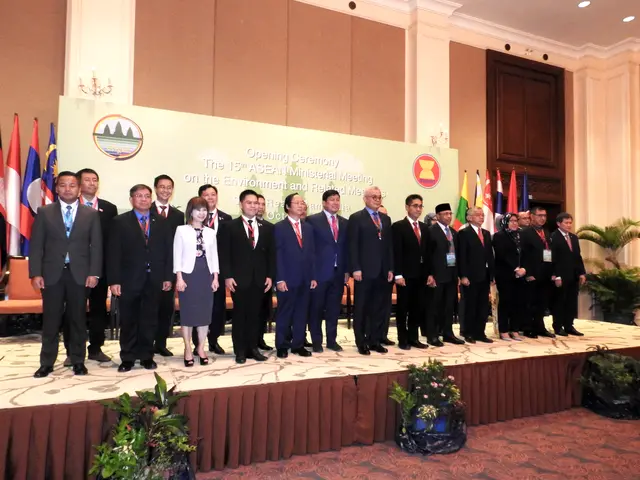By APD witer Melo M. Acuña
**MANILA, Oct. 9 (APD) – **Environment ministers from ASEAN countries meeting in Siem Reap, Cambodia named five protected areas from Myanmar, Thailand and Viet Nam and became part of the ASEAN Heritage Parks (AHPs) or areas of high conservation value that best represent the region’s rich natural resources and cultural identity.
In a statement from the ASEAN Center for Biodiversity, Environment ministers from the ASEAN declared Hat Chao Mai National Park and Mu Ko Libong Non-hunting area and Mu Ko Ang Thing National Park, both from Thailand, Lo Go-Xa Mat National park and Ngoc Linh Nature Reserve of Viet Nam and Htamanthi Wildlife Sanctuary of Myanmar as ASEAN Heritage Parks during the 15th ASEAN Ministerial Meeting of the Environment (AMME) and related meetings which began last Monday, October 7. The conference will end tomorrow, Friday, October 10.
“We are happy to announce that we now have 49 ASEAN Heritage Parks. These are models of effective protected area management,” said Dr. Theresa Mundita Lim, executive director of Los Baños, Laguna-based ASEAN Center for Biodiversity (ACB).
ACB serves as the Secretariat of the AHP Programme, a flagship initiative of the ASEAN that recognizes national parks and nature reserves with outstanding wilderness and biodiversity values.
“These additions to our growing list of protected areas in the region demonstrate ASEAN’s intensified and unified efforts to conserve a wider area and cover all types of ecosystems,” she added. Of the 49 heritage parks, there are 12 marine and coastal parks.
The AHP programme encourages the sustainable and equitable management of protected areas to contribute to the progress of achieving Aichi Target 11 under the Convention on Biological Diversity. Target 11 calls for the conservation of at least 17 per cent of terrestrial and inland water areas and 10 percent of coastal and marine areas, especially areas of particular importance for biodiversity and ecosystems, by 2020.
“The AHPs represent the rich and diverse species and ecosystems of the ASEAN region. We hope to cover more areas in line with our main goal of reducing the rate of biodiversity loss in the region,” Lim explained. For a protected area to be recognized as ASEAN Heritage Park, it should meet standards which includes ecological completeness, representativeness, naturalness, high conservation importance, legally gazetted or identified conservation areas, approved management plan, transboundary, uniqueness, high ethno-biological significance and importance for endangered biodiversity.
AMME is held every two years for the environment ministers to deliberate on a wide range of environmental issues. The 15th AMME discussed biodiversity conservation, climate change, environmentally sustainable city, coastal and marine environment, environmental education, chemical and hazardous waste management, transboundary haze pollution control and eco-schools.
The ASEAN environment ministers also attended related meetings, including the 15th Meeting of the Conference of the Parties to the ASEAN Agreement on Transboundary Haze Pollution, the 16th ASEAN+3 (China, Japan and South Korea) Environmental Ministers’ Meeting and the ASEAN-Japan Ministerial Dialogue on the Environmental Cooperation.
It was learned the new AHPs and other conservation topics are expected to be discussed at the Sixth ASEAN Heritage Park Conference (AHP6) on October 21-24,2019 in Pakse, Lao People’s Democratic Republic.
(ASIA PACIFIC DAILY)
 简体中文
简体中文

